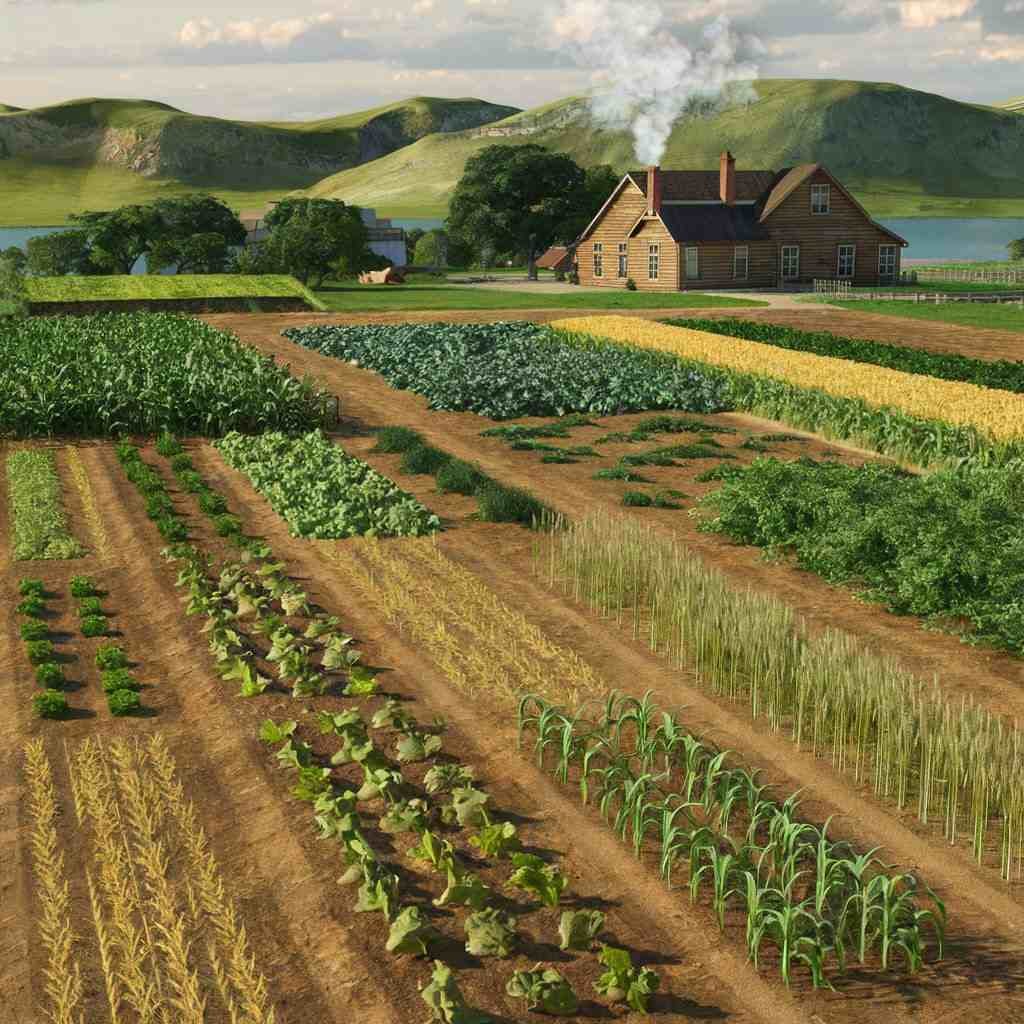Farm planning is the methodical process of establishing objectives, assessing available resources, and formulating plans of action to accomplish desired results in farming operations. Its features include a thorough evaluation of agricultural resources, including labor, capital, land, and technology; additionally, it takes the market, environmental variables, and risk management into account. Budgeting, forecasting, crop rotation, land use planning, and enterprise analysis are some of the techniques used in farm planning. Farmers may improve production, enhance efficiency, and assure long-term sustainability in their farming endeavors by incorporating these approaches and making well-informed decisions.
Table of Contents
Introduction to Farm Planning
In order to optimize productivity, sustainability, and profitability, farm planning is a fundamental aspect of the agricultural sector. Farmers are able to increase the productivity and efficiency of their operations by putting in place an organized method for managing resources. To attain the best outcomes, farm planning’s main objective is to maximize the use of capital, labor, and land.
Crop rotation, financial planning, and resource management are important components of farm planning. In order to guarantee that resources are used sustainably and effectively, resource management entails the careful allocation and exploitation of inputs like water, soil, and equipment. Crop rotation is another crucial technique that enhances total crop yields, preserves soil fertility, and lessens the impact of pests and diseases. To guarantee that the farm stays financially viable, financial planning, on the other hand, focuses on predicting, managing costs and revenues, and budgeting.

By offering a precise framework for evaluating many facets of the farm business, well-thought-out farm planning also helps improve decision-making. This entails determining potential risks, creating plans to reduce them, and assessing the viability of new initiatives. Farmers can make well-informed decisions that support the resilience and long-term performance of their farms by putting in place a thorough strategy.
Furthermore, farm planning encourages environmentally friendly and resource-saving behaviors, which contributes to sustainability. Farmers can reduce the detrimental effects of agricultural practices on ecosystems while maintaining the long-term productivity of their enterprises by carefully planning and implementing procedures.
Characteristics
- Comprehensive Assessment: To identify strengths, weaknesses, opportunities, and threats, a comprehensive assessment of farm resources, including land, labor, money, and technology, is a necessary part of farm planning.
- Environmental Considerations: In order to guarantee sustainable agricultural operations, it takes into account environmental issues such soil quality, climate conditions, and water availability.
- Market Analysis: To make well-informed judgments about crop selection, marketing tactics, and value-added products, farm planning involves assessing market trends, demand-supply dynamics, and price changes.
- Risk management: By creating risk mitigation techniques and backup plans, it handles a variety of hazards that are specific to agriculture, including weather-related risks, market volatility, and insect infestations.
- Goal Setting: Whether the focus is on expanding revenue sources, boosting productivity, or implementing sustainable practices, farm planning entails establishing precise, attainable goals.
Techniques
- Budgeting: To support financial planning and decision-making, farm budgets project revenue, costs, and profitability for given time periods.
- Forecasting: Projecting future events, such as crop yields, prices, and input costs, by using historical data, weather forecasts, and market patterns.
- Crop Rotation: Arranging crops to be planted in different growing seasons in order to maximize yields, lower insect and disease populations, and improve soil fertility.
- Land Use Planning: Choosing the best land use techniques to enhance sustainability and production of the land, such as crop selection, grazing management, and conservation measures.
- Operation analysis: Assessing each agricultural enterprise or activity’s profitability and performance to pinpoint areas in need of development and resource reallocation.
- Technology Adoption: Using contemporary agricultural technology to improve sustainability, efficiency, and productivity, such as irrigation systems, crop monitoring tools, and precision farming.
- Financial Analysis: To determine the economic viability of farming operations and investment prospects, financial study is performed. This analysis includes profitability analysis, break-even analysis, and investment evaluation.
Farmers employ farm planning as a methodical technique to maximize profitability, improve production efficiency, and make the most use of their resources. It entails evaluating agricultural resources, such as land, labor, capital, and technology, while taking risk management, market conditions, and environmental aspects into account. To make well-informed judgments regarding input allocation, production methods, and investment choices, many techniques are utilized, including budgeting, forecasting, crop rotation, and technology adoption. Farmers seek to attain profitable and sustainable results by combining these tactics, assuring the long-term viability and profitability of their farming endeavors.
Frequently Asked Question(FAQ)
What is farm planning?
Farm planning is a systematical process that farmers employ to maximize profitability, improve production efficiency, and make the most use of their resources.
Why is farm planning important?
Farm planning leads to increased productivity, profitability, and sustainability by assisting farmers in making well-informed decisions regarding the distribution of inputs, production techniques, and investment choices.
Related Articles

